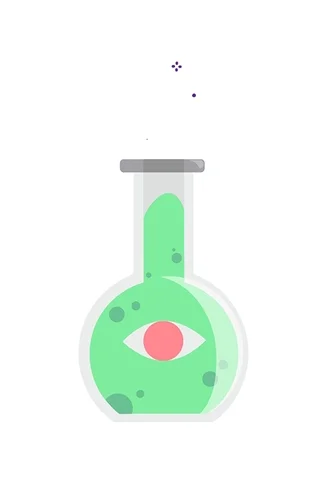

Keywords: Nonmetals – Oxygen – Combustion – Nonmetal oxides
Chemistry
Keywords: Nonmetals – Oxygen – Combustion – Nonmetal oxides
Keywords: Reaction rate – Chemical reactions – Rate of reaction – Variables
Chemistry
Keywords: Reaction rate – Chemical reactions – Rate of reaction – Variables
Unit one: chemical reactions. Lesson one: chemical reactions.Keywords (English): mercury oxide......
Chemistry
Unit one: chemical reactions. Lesson one: chemical reactions.Keywords (English): mercury oxide – thermal decomposition – mercury – oxygen
Unit one: chemical reactions. Lesson one: chemical reactions.Keywords (English): copper hydrox......
Chemistry
Unit one: chemical reactions. Lesson one: chemical reactions.Keywords (English): copper hydroxide – thermal decomposition – heating – oxides
Unit one: chemical reactions. Lesson one: chemical reactions.Keywords (English): copper carbona......
Sciences
Unit one: chemical reactions. Lesson one: chemical reactions.Keywords (English): copper carbonate – heating – decomposition – carbon dioxide
Unit one: chemical reactions. Lesson one: chemical reactions.Keywords (English): copper sulfa......
Sciences
Unit one: chemical reactions. Lesson one: chemical reactions.Keywords (English): copper sulfate – thermal decomposition – oxides – color change
Unit one: chemical reactions. Lesson one: chemical reactions.Keywords (English): thermal deco......
Science
Unit one: chemical reactions. Lesson one: chemical reactions.Keywords (English): thermal decomposition – sodium nitrate – heat – oxides – thermal reaction
Unit one: chemical reactions. Lesson one: chemical reactions.Keywords (English): silver nitrate......
Science
Unit one: chemical reactions. Lesson one: chemical reactions.Keywords (English): silver nitrate – sodium chloride – white precipitate – precipitation reaction
Keywords: Chemical reaction – Reactants – Products – Change
Science
Keywords: Chemical reaction – Reactants – Products – Change
Purpose of experimentPreparation of carbon dioxide gas in the laboratorytoolsgraduated flask - glass......
Sciences
Purpose of experimentPreparation of carbon dioxide gas in the laboratorytoolsgraduated flask - glass beaker - cork stopper with two holes - glass funnelU-shaped glass tube - dilute hydrochloric acid - calcium carbonatesteps Place the candle in the middle of the lab bench.Light the candle by usi......
Keywords: Equation balancing – Chemical equilibrium – Reactants – Products – Atoms
Science
Keywords: Equation balancing – Chemical equilibrium – Reactants – Products – Atoms
Keywords: Metals – Acids – Hydrogen – Chemical reaction
Science
Keywords: Metals – Acids – Hydrogen – Chemical reaction
Keywords: Chemical properties – Metals – Oxidation – Oxides
Science
Keywords: Chemical properties – Metals – Oxidation – Oxides
the goal:Learning how to prepare ester.Materials and tools: Electric heater - Glass cup - Test......
Chemistry
the goal:Learning how to prepare ester.Materials and tools: Electric heater - Glass cup - Test tube - Salicylic acid - Methanol - Sulfuric acid - Cotton - SpoonSteps:1. Fill the glass with water and heat it on the electric heater to the mid-level temperature.2. Weigh 1.5 grams of salicylic acid......
Formation of SaltKeywords (English): salt formation – ionic reaction – crystallization
Chemistry
Formation of SaltKeywords (English): salt formation – ionic reaction – crystallization
Keywords: Displacement reaction – Iron – Copper sulfate – Copper precipitation – Chemical change
Chemistry
Keywords: Displacement reaction – Iron – Copper sulfate – Copper precipitation – Chemical change
Keywords: Nitrogen gas – Preparation – Reaction – Products – Laboratory
Chemistry
Keywords: Nitrogen gas – Preparation – Reaction – Products – Laboratory
Keywords: Nitrogen – Salts – Chemical reaction – Analysis
Chemistry
Keywords: Nitrogen – Salts – Chemical reaction – Analysis
Keywords: Nitrogen gas – Preparation – Reaction – Products – Laboratory
Chemistry
Keywords: Nitrogen gas – Preparation – Reaction – Products – Laboratory
Keywords: Ammonia gas – Ammonia – Preparation apparatus – Odors – Bases
Chemistry
Keywords: Ammonia gas – Ammonia – Preparation apparatus – Odors – Bases
Keywords: Ammonia – Hydrogen chloride – White vapor – Gas combination
Science
Keywords: Ammonia – Hydrogen chloride – White vapor – Gas combination
The process of oxidation and reduction according to the traditional conceptKeywords (English): oxida......
Chemistry
The process of oxidation and reduction according to the traditional conceptKeywords (English): oxidation – reduction – electron loss – electron gain – redox reactions
Keywords: Displacement – Metals – Hydrogen – Chemical reaction
Chemistry
Keywords: Displacement – Metals – Hydrogen – Chemical reaction
Keywords: Properties – Substances – Chemical reaction – Before reaction – After reaction – Changes
Science
Keywords: Properties – Substances – Chemical reaction – Before reaction – After reaction – Changes
Keywords: Chemical reaction – Precipitate – Reactants – Products – Chemical change – Observation
Science
Keywords: Chemical reaction – Precipitate – Reactants – Products – Chemical change – Observation
Objective: To distinguish between a mixture and a compound through the reaction of iron and sulfur.M......
Properties of materials
Objective: To distinguish between a mixture and a compound through the reaction of iron and sulfur.Materials: Two dishes – stirring tool – boiling tube – test tube holder – sulfur powder – iron filings – steel wool – magnet.Steps: Place some iron filings in a glass beaker, add yellow sulfur powder,......
Objective: To identify the effect of temperature on chemical changes and observe milk spoilage when......
Science
Objective: To identify the effect of temperature on chemical changes and observe milk spoilage when left at room temperature.Materials: Small glass cup, equal amounts of milk.Steps: Pour equal amounts of milk into two small cups. Place the first cup in the refrigerator. Leave the second cup on a kit......
Objective: To identify the difference between exothermic and endothermic reactions. Materials: Glass......
Chemistry
Objective: To identify the difference between exothermic and endothermic reactions. Materials: Glass beaker, teaspoon, thermometer, water, magnesium oxide (MgO), sulfuric acid (H₂SO₄), baking soda (NaHCO₃), vinegar (CH₃COOH).Procedure:Place a small amount of magnesium oxide in a glass beaker.Add an......